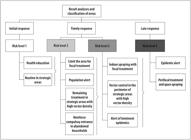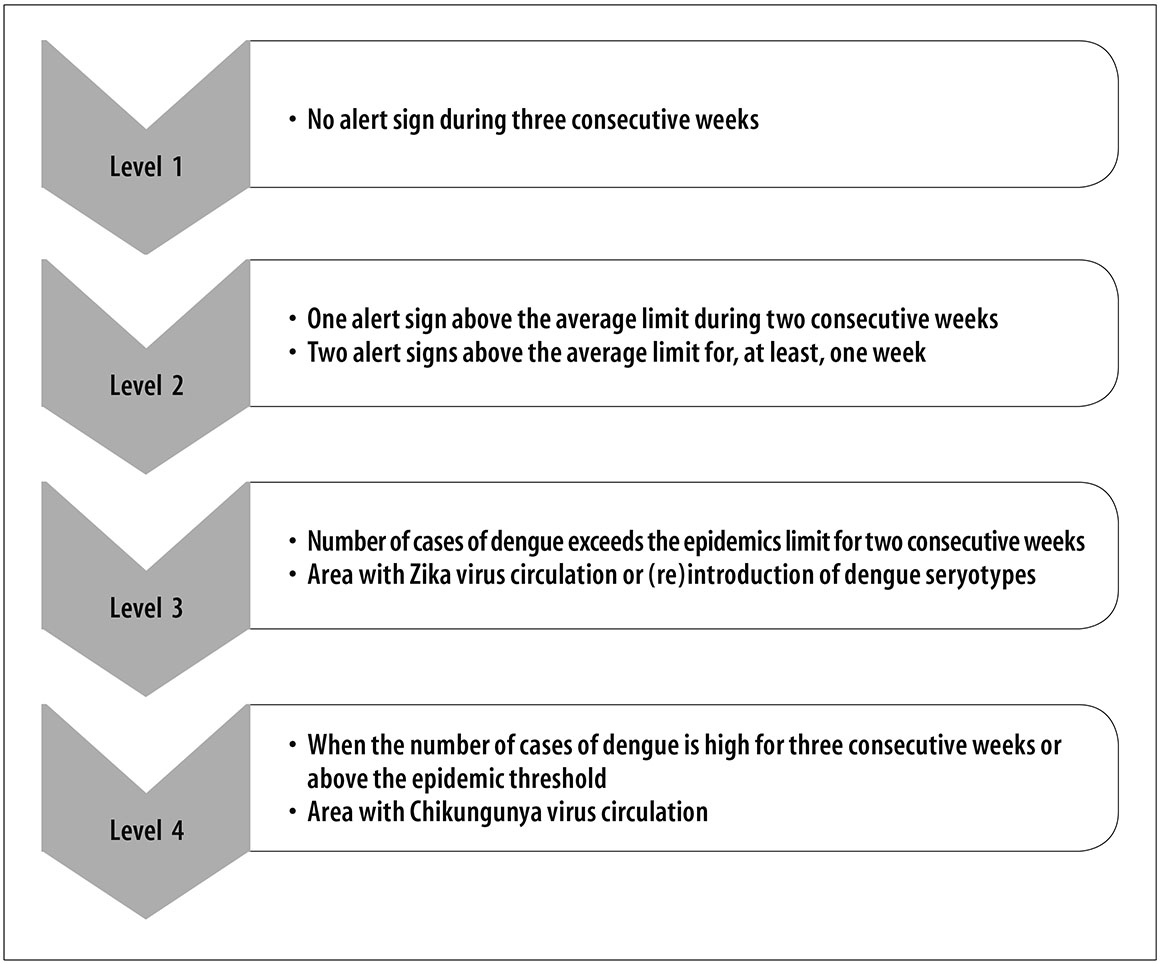Abstract
OBJECTIVE:
to report the vigi@dengue experience, held in the municipality of Natal-RN, Brazil, from October/2015 to May/2016.
METHODS:
entomological indicators were obtained from the oviposition traps, epidemiological indicators from notifications on the online Information System for Notifiable Diseases (Sinan-dengue), active search for cases and viral RNA detection (RTq-PCR) in arthropods and human serum samples; risk levels have been created based on these indicators; categories of interventions for each risk level have been established.
RESULTS:
early identification of epidemics in three areas of the municipality, with guidance for field work for the most vulnerable areas; the municipality presented ovitrap positivity index (OPI) of 40% and eggs density index (EDI) of 51 eggs/ovitraps; identification of CHIKV, DENV-1 and DENV-3 in Natal-RN.
CONCLUSION:
the strategy identified the early emergence of epidemics in specific locations; it was helpful in the guidance of control measures for the areas of major risk.
Keywords:
Delimitation of risk areas; Vector control; Dengue; Arboviruses; Aedes aegypti

 Thumbnail
Thumbnail
 Thumbnail
Thumbnail
 Thumbnail
Thumbnail
 Thumbnail
Thumbnail



